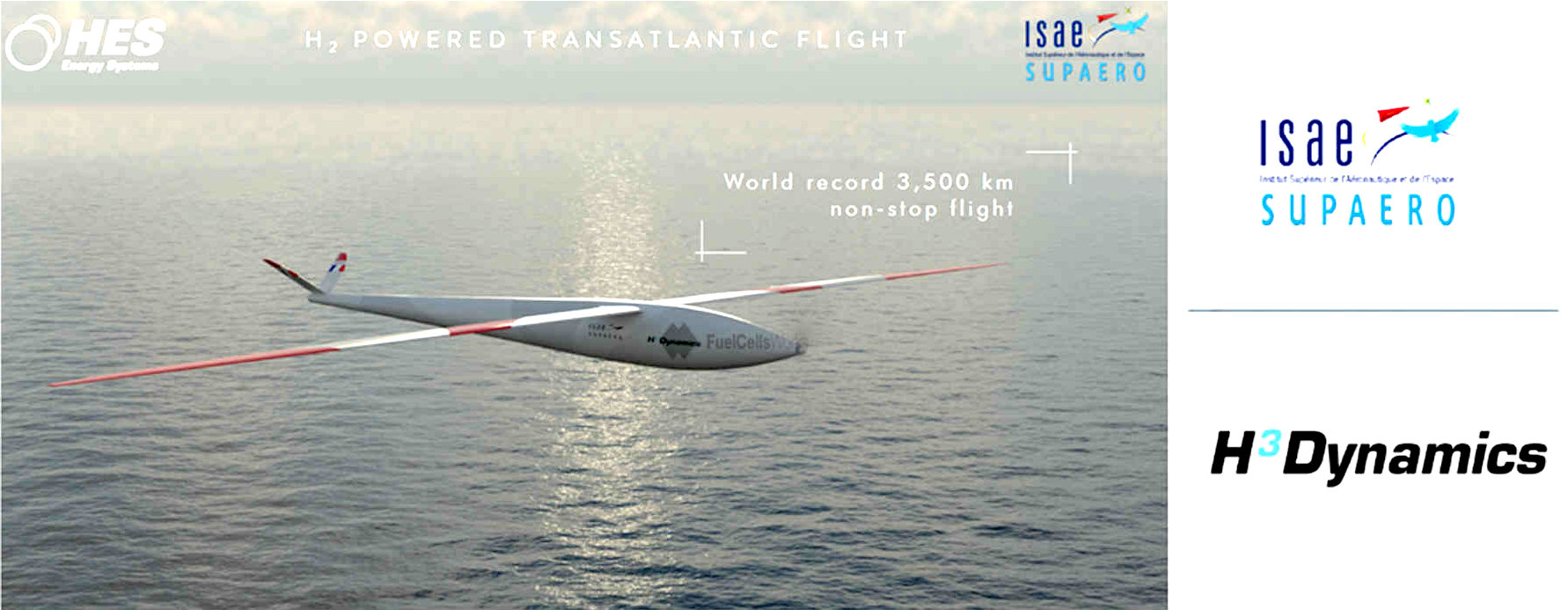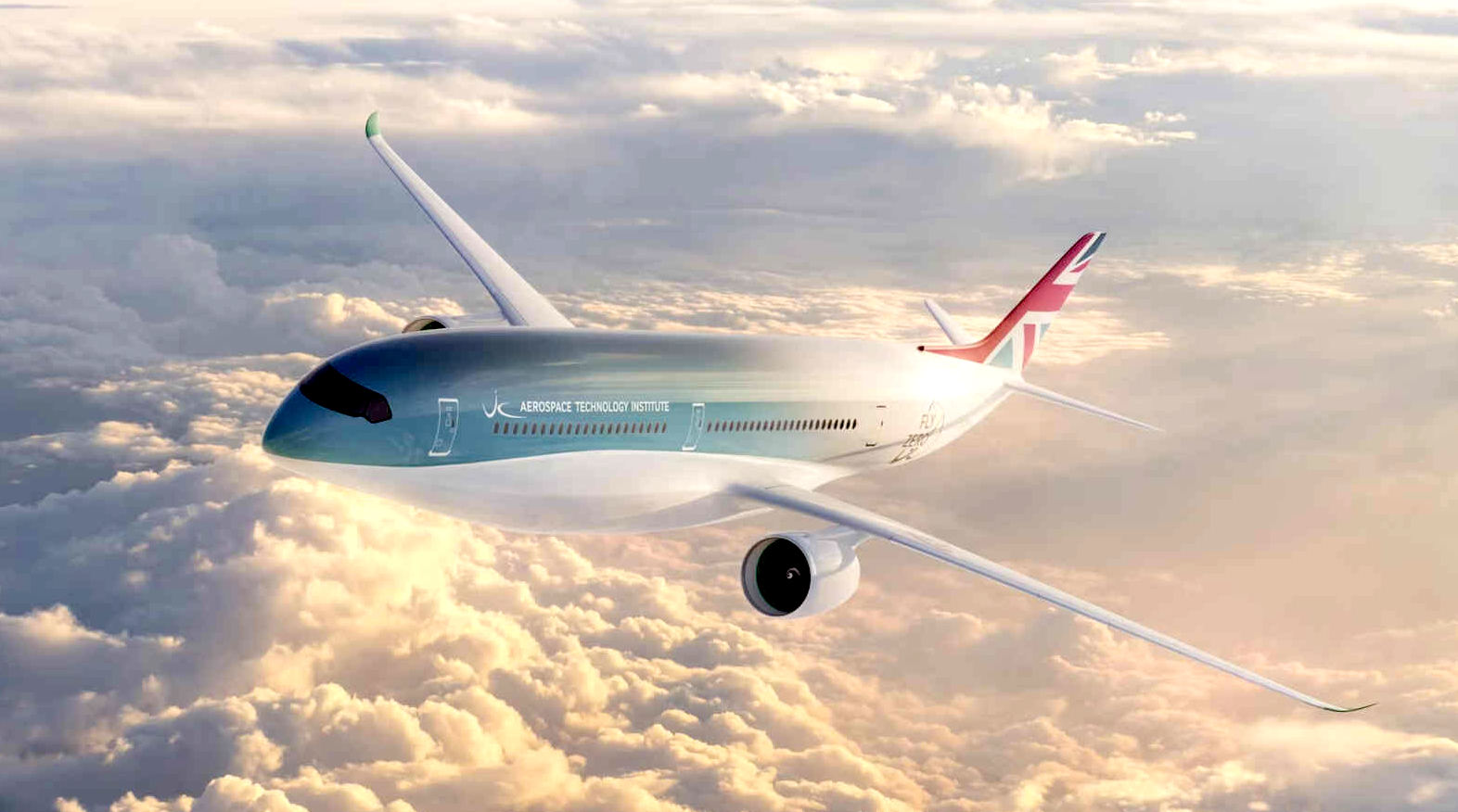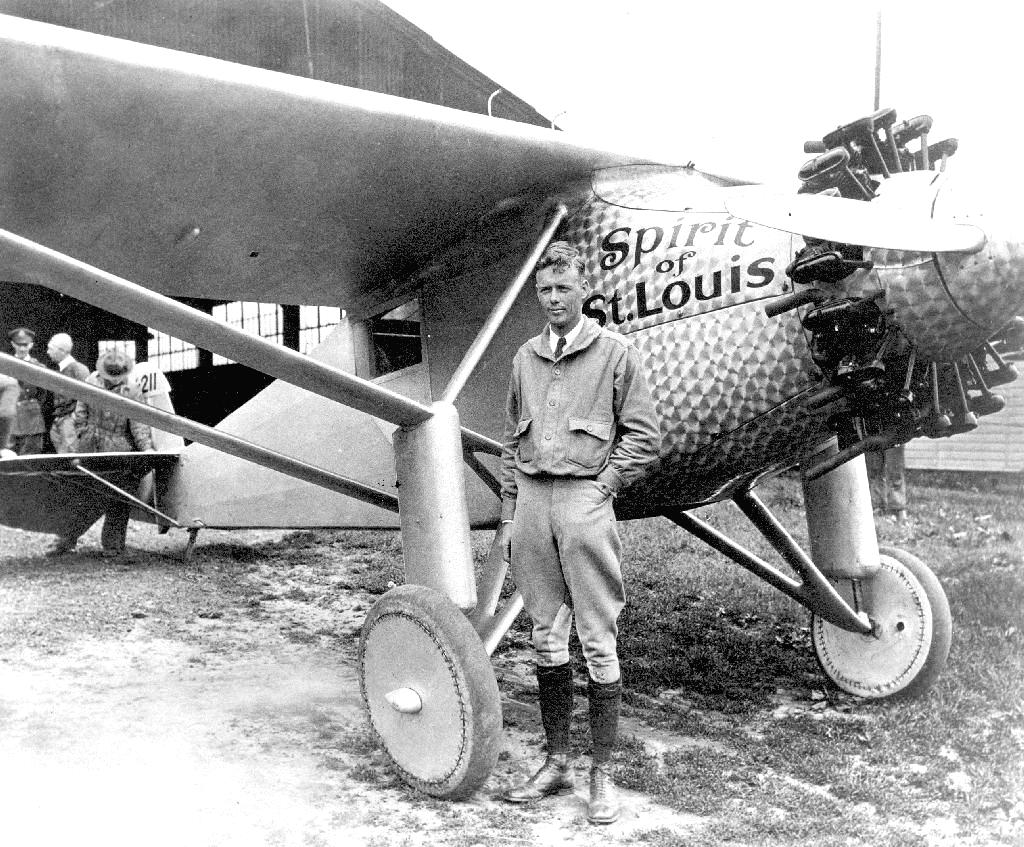|
SIMPLE FLYING 6 DECEMBER 2021 - ACROSS THE ATLANTIC ON HYDROGEN? FLYZERO REVEALS ZERO EMISSION CONCEPT
The Aerospace Technology Institute (ATI) has today revealed a hydrogen aircraft concept that it says could fly anywhere in the world with just one stop and zero carbon emissions. The aircraft is designed to carry as many as 279 passengers with the same speed and comfort as today’s jetliners.
FlyZero’s midsize concept
FlyZero, a project backed by the UK government and led by the ATI, has today unveiled a midsize aircraft concept that it believes could change the way we fly in the future. Up to 279 passengers could be accommodated onboard the aircraft, which the designers say would have a range capable of linking any two points in the world with only one stop.
The UK’s transport secretary, Grant Shapps, commented on the unveiling of the concept, saying,
“This pioneering design for a liquid hydrogen-powered aircraft, led by a British organisation, brings us one step closer to a future where people can continue to travel and connect, but without the carbon footprint.”
The aircraft, which doesn’t look unlike a regular widebody plane, would travel at the same speed and with the same comfort levels as today’s common jets. It would boast a range of 5,250 NM. To put that in context, it’s a fair bit less than the Dreamliner or A330neo achieves, but more than any current or future narrowbody.
The aircraft would be powered by liquid hydrogen, stored in cryogenic fuel tanks at some minus 250 degrees C (-418 degrees F). These would be located in the aft fuselage and two small ‘cheek’ tanks along the forward fuselage. ATI notes that these tanks also help with the weight and balance of the aircraft as the fuel is burned off. These design features can be seen in the renderings issued today.
Project director Chris Gear noted,
“At a time of global focus on tackling climate change our midsize concept sets out a truly revolutionary vision for the future of global air travel keeping families, businesses and nations connected without the carbon footprint.”
The project team plans to publish a total of three final aircraft concepts in early 2022. Alongside this midsize aircraft, they are also looking to conceptualize a regional aircraft as well as a narrowbody. The group will also publish technology roadmaps, economic reports and a sustainability assessment.
The problem with hydrogen
While FlyZero is not the first firm to bring a hydrogen concept to market, and likely won’t be the last, the reality of replacing fossil fuels with hydrogen remains a long way off. Simple Flying recently spoke with Boeing’s Chief Sustainability Officer, Chris Raymond, about the potential for hydrogen-fueled planes. He explained the problem with hydrogen, saying,
“Liquid hydrogen is probably the best way to use it as a fuel, but it requires big cooling systems and big storage systems. Hydrogen requires about four times the volume to get the same amount of energy, so you end up with a plane that is more fuel tanks than it is passenger capacity – and that risks the efficiency overall.”
There’s also the question of where the hydrogen comes from. Producing hydrogen requires huge amounts of electricity, and to make that hydrogen ‘green,’ it needs to come from
renewable
electricity. Chris noted,
“We should all want more green hydrogen in the world, because if there was enough
green
hydrogen, that that would mean there's enough renewable electricity.”
It’s a steep mountain to climb, and one which requires multiple developments in all parts of the supply chain to make it a reality. Nevertheless, projects such as the FlyZero hydrogen plane concept serve to push the agenda forward. Coupled with the full result of the study due to be released in early 2022, the UK hopes to lead the way to a zero-carbon flying future.
By Joanna Bailey
CONTACTS
Aerospace Technology Institute HQ,
Martell House,
University Way,
Cranfield.
MK43 0TR
Aerospace Technology Institute,
4th Floor,
10 Midford Place,
London
W1T 5BJ

HES
H3 DYNAMICS - The proposed H2 powered transatlantic drone collaboration
with ISAE SUPAERO, zero emission aviation, non-stop across the Atlantic Ocean.
|


